Related Research Articles
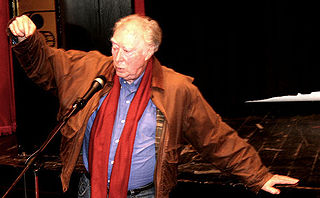
Michael James Aleck Snow was a Canadian artist who worked in a range of media including film, installation, sculpture, photography, and music. His best-known films are Wavelength (1967) and La Région Centrale (1971), with the former regarded as a milestone in avant-garde cinema.

Guy Maddin is a Canadian screenwriter, director, author, cinematographer, and film editor of both features and short films, as well as an installation artist, from Winnipeg, Manitoba. Since completing his first film in 1985, Maddin has become one of Canada's most well-known and celebrated filmmakers.

Donald Everett Shebib was a Canadian film and television director. Shebib was a central figure in the development of English Canadian cinema who made several short documentaries for the National Film Board of Canada and CBC Television in the 1960s before turning to feature films, beginning with the influential Goin' Down the Road (1970) and what many call his masterpiece, Between Friends (1973). He soon became frustrated by the bureaucratic process of film funding in Canada and chronic problems with distribution as well as a string of box office disappointments. After Heartaches (1981), he made fewer films for theatrical release and worked more in television.
Ross McLaren was a Canadian artist, filmmaker, and educator based in New York City.
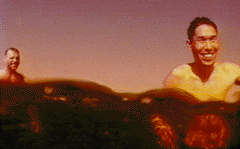
Richard Fung is a video artist, writer, public intellectual and theorist who currently lives and works in Toronto, Ontario. He was born in Port of Spain, Trinidad and is openly gay.
Peggy Ahwesh is an American experimental filmmaker and video artist. She received her B.F.A. at Antioch College. A bricoleur who has created both narrative works and documentaries, some projects are scripted and others incorporate improvised performance. She makes use of sync sound, found footage, digital animation, and Pixelvision video. Her work is primarily an investigation of cultural identity and the role of the subject in various genres. Her interests include genre; women, sexuality and feminism; reenactment; and artists' books. Her works have been shown worldwide, including in San Francisco, New York, Barcelona, London, Toronto, Rotterdam, and Créteil, France. Starting in 1990, she has taught at Bard College as a Professor of Film and Electronic Arts. Her teaching interests include: experimental media, history of the non-fiction film, and women in film.
Gariné Torossian is a Canadian filmmaker. Her works include Stone, Time, Touch which won best documentary at the Warsaw International Film Festival in 2007. Her films have screened at MoMa, the Telluride Film Festival (Colorado), Lux Cinema (London), the Egyptian Theatre, the Jerusalem Film Festival, the Warsaw International Film Festival, Berlinale, and a host of cinematheques, including those in Berlin, Edmonton, Ottawa, Winnipeg and Vancouver. Torossian's debut short, Visions (1992), was part of a retrospective at Centre Pompidou when she was 22. Her subsequent shorts were screened at New York Museum of Modern Art Cineprobe series when she was 25, and at the Spielberg theatre at the Egyptian in Los Angeles (2019). Torossian's work has been broadcast on Arte France, Documentary Channel (Canada), Bravo Canada, Sundance Channel (USA), SBS (Australia) and WTN (Canada). Her films focus on notions of memory, longing and identity, underlined by her diverse and comprehensive filmography.
The Images Festival is a yearly event devoted to independent and experimental film, video art, new media and media installation that takes place each spring in Toronto.

Charles Officer was a Canadian film and television director, writer, actor, and professional hockey player.
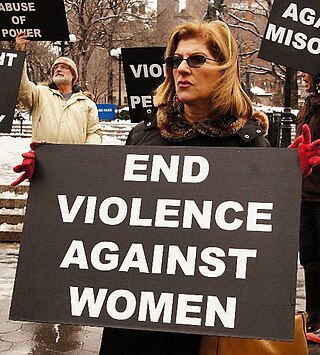
Tami Kashia Gold is a documentary filmmaker, visual artist and educator. She is also a professor at Hunter College of the City University of New York in the Department of Film and Media Studies.
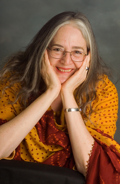
Alexis Krasilovsky is an American filmmaker, writer and professor. Krasilovsky's first film, End of the Art World documented artists including Andy Warhol and Robert Rauschenberg. Krasilovsky moved from New York to Los Angeles in the 1970s to pursue her passion for filmmaking, writing and directing films through her company, Rafael Film. She is the writer and director of the global documentary features, Women Behind the Camera and Let Them Eat Cake.
Lynne Fernie is a Canadian filmmaker and interdisciplinary artist. She spent fourteen years as the Canadian Spectrum programmer for the Hot Docs Festival from 2002 to 2016, and was described as having a passion as "deep as her knowledge," and it was said that her "championing of Canadian documentaries and the people who make them has never wavered."

Marty Gross is a Canadian consulting producer for companies based in North America, Europe and Asia, with focus on Japanese art, film, theatre and crafts. His company, Marty Gross Film Productions, Inc., manages one of the most comprehensive websites devoted to films on Japanese cultural and historical subjects.
Ariel Maria Dougherty is an American independent film maker, feminist media advocate and activist. She is best known as the co-founder of non-profit media arts organization Women Make Movies. In recent years she has written extensively about the intersections of women's rights and media justice and the need for increased support for both.
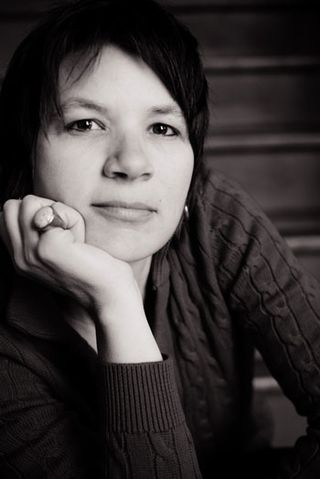
Liz Marshall is a Canadian filmmaker based in Toronto. Since the 1990s, she has directed and produced independent projects and been part of film and television teams, creating broadcast, theatrical, campaign and cross-platform documentaries shot around the world. Marshall's feature length documentaries largely focus on social justice and environmental themes through strong characters. She is known for The Ghosts in Our Machine and for Water on the Table, for which she also produced impact and engagement campaigns, and attended many global events as a public speaker. Water on the Table features water rights activist, author and public figure Maude Barlow. The Ghosts in Our Machine features animal rights activist, photojournalist and author Jo-Anne McArthur.

Deborah Stratman is a Chicago-based artist and filmmaker who explores landscapes and systems. Her body of work spans multiple media, including public sculpture, photography, drawing and audio.
Justine Pimlott is a Canadian documentary filmmaker, and co-founder of Red Queen Productions with Maya Gallus. She began her career apprenticing as a sound recordist with Studio D, the women’s studio at the National Film Board of Canada (NFB), in Montreal. As a
Ivan Gaal is an Australian filmmaker. He primarily makes documentary films. He has also worked as a professional photographer, and also gained recognition as a canoeist.

The Clichettes were an all-women feminist performance art group formed in Toronto, Canada in 1977. Their practice is notable for injecting humour and theatricality into the sphere of performance art. The three performers initially worked using lip sync and choreography as their tools to parody pop culture depictions of femininity and later expanded their practice by including elements from science fiction and theatre in their performances. The Clichettes are notable for their impact on Canadian performance art as well as Feminist and performing arts in general.
Min Sook Lee is a Canadian documentary filmmaker, screenwriter, academic, and political activist.
References
- ↑ Hume, Christopher (March 11, 1988). "Former Painter Puts Visual Effects in Focus". Toronto Star.
- ↑ Hoolbloom, Mike (April 2, 2017). "100 Best Canadian Films - Mike Hoolboom".
- 1 2 "Water Fall: A Cinematic Installation". Scotiabank CONTACT Photography Festival.
- ↑ Canadian Film Centre. "Annette Mangaard".
- ↑ OCAD University (May 2, 2017). "OCAD Class of 2017 - Gradex" . Retrieved 2018-11-25.
- 1 2 "Canadian Film Centre - Directory - Annette Mangaard" . Retrieved 2018-11-25.
- ↑ Michael Hoolbloom (May 1, 1986). "It Felt Underground: An Interview with Annette Mangaar" . Retrieved 2018-11-25.
- 1 2 3 4 "Concordia, Scotiabank Nuit Blanche".
- ↑ Mike, Hoolbloom. "It Felt Underground: an interview with Annette Mangaard, May 9, 2013" . Retrieved 2019-03-17.
- ↑ Sternberg, Barbara (1988). How We Sit and Just Watch it All. Cinema Canada, no 155. p. 66.
- ↑ McDonald, Bruce (April 1988). "LIFT Newsletter". LIFT Newsletter.
- ↑ Gerstel, Judy (1996), Trying to get pregnant can be fun, The Toronto Star, p. B4
- ↑ Doyle, John (June 21–27, 1997). "Cooking Up A Story (Film Feature)". Broadcast Week: The Globe and Mail.
- ↑ "Annette Mangaard". Women Who Make Movies, Annette Mangaard. 2014.
- ↑ Vaughan, R.M (October 29, 2014). "New Doc Sheds Light on Feminist Art". Canadian Art.
- ↑ Walsh, Barry (July 17, 2012). "Planet In Focus Appoints New Board Members". realscreen.com.
- 1 2 Macdonald, Bruce (1989). "Annette Mangaard Voodoo Child!!". LIFT Newsletter. p. 1.
- 1 2 3 4 Hoolbloom, Michael (May 1, 1986). "It Felt Underground: An Interview with Annette Mangaard" . Retrieved 2018-11-25.
- ↑ "New Doc Sheds Light on Feminist Art, R.M Vaughan, Canadian Art Magazine". October 29, 2014.
- ↑ Canadian Filmmakers Distribution Centre (CFMDC). "There Is in Power... Seduction by Annette Mangaard Canada". There Is in Power... Seduction by Annette Mangaard.
- ↑ Ely, Bonita (July 2011). "Buffer Zone: Site Specific Art at Sydney Olympic Park". Buffer Zone: Site Specific Art at Sydney Olympic Park.
- ↑ OCAD University. "Meltdown IAMD Thesis Exhibition by Annette Mangaard" . Retrieved 2018-11-25.